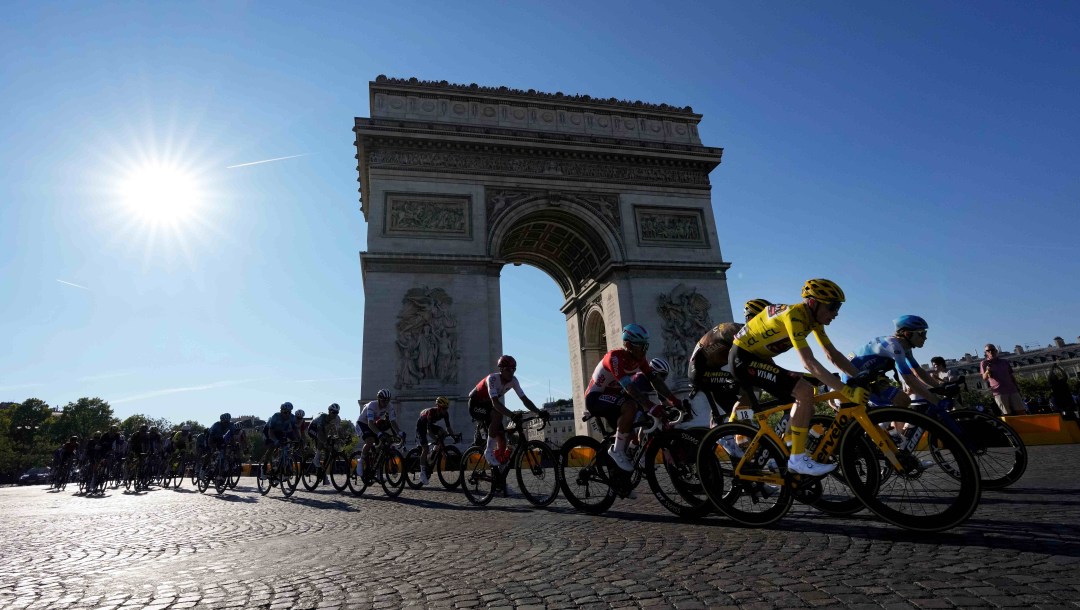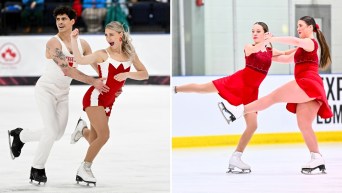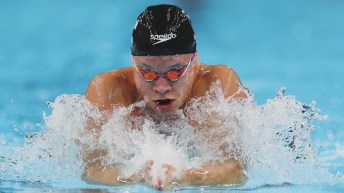Everything you need to know about the Grand Tours of road cycling
The Tour de France is one of the world’s most famous sporting events. But did you know it is just one of three road cycling Grand Tours?
The Giro d’Italia and the Vuelta a España are the other road cycling Grand Tours, each one comprised of 21 stages. The Grand Tours each cover more than 3000 kilometres during three weeks of racing with little rest for the riders.
Keep reading to learn more about the Grand Tours of road cycling.
When and where do the Grand Tours take place?
The Giro d’Italia is the first Grand Tour on the annual calendar. It takes place throughout Italy each May.
The Tour de France comes next, taking place throughout France each July.
The Vuelta a España is the final Grand Tour of the year, held each August/September in Spain.
The routes for all three cycling Grand Tours change each year. Every so often, race organizers will choose to have a Grand Tour start outside the primary host country. This happened recently for the Grand Départ of the Tour de France in 2022 and 2023, which began in Denmark (Copenhagen) and Spain (Basque Country), respectively. The 2022 Giro d’Italia had its Grande Partenza in Hungary. The first three stages of the 2022 Vuelta a España were in the Netherlands.
Since 1975, the Tour de France has always finished on the Champs-Élysées, providing classic images of cyclists going around the Arc de Triomphe, the winner sometimes with a glass of champagne in hand. The Vuelta a España traditionally concludes in Madrid. The Giro d’Italia has moved around its final stage, holding it in cities such as Rome, Verona, and Milan.
How old are the road cycling Grand Tours?
The Tour de France is the oldest of the Grand Tours. First held in 1903, it has been an annual highlight of the summer, except during World War I (1915-18) and World War II (1940-46).
The Giro d’Italia has been held annually since 1909, with similar exceptions because of the First and Second World Wars.
The Vuelta a España was first organized in 1935 but endured many disruptions during its first two decades because of wars and a difficult economic situation. For many years, it didn’t have the same level of prestige as the two older tours and didn’t attract a lot of top international cyclists. But that changed in the mid-1990s when it was moved from the spring to late summer, no longer putting it in near-conflict with the Giro d’Italia.
What is a stage race?
Road cycling races can be classified as a one-day race or a stage race. A one-day race is exactly what the name says. A stage race takes place over multiple days and can include various forms of racing. In a 21-stage Grand Tour, there are usually only a couple of recovery days interspersed, so fitness is key.
Some stages might be held in a time trial format, with riders leaving the start in intervals and racing directly against the clock. Most stages will be of a mass start format, in which the first rider across the finish line wins that stage.
But stage wins are not what matters most. The winner of a stage race is the rider who has the fastest overall time at the end of all stages. Some stages will cover flat terrain well suited to sprinters. Some stages will be hilly while some will include big mountains best suited to strong climbers. You can be sure that whoever wins a stage race is strong in all aspects of road cycling.
What do the different coloured jerseys mean?
It’s pretty well known that the most coveted prize in the Tour de France is the yellow jersey, or maillot jaune. That is given to the leader in the general classification – the rider with the fastest overall time.
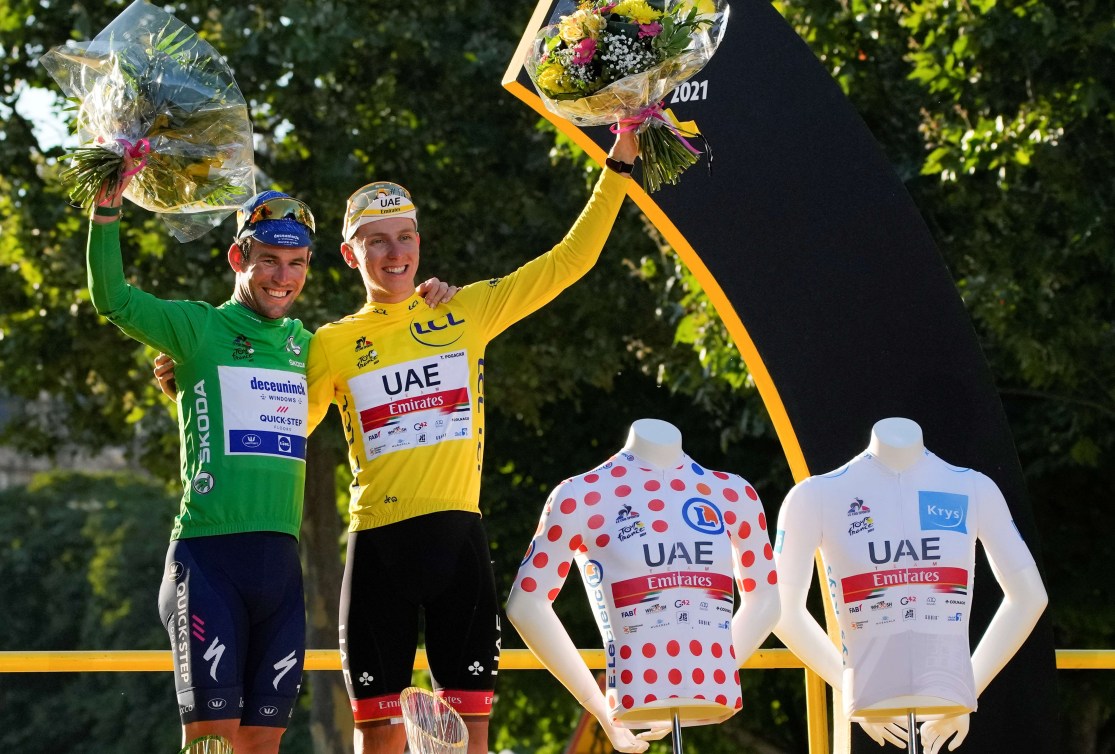
The leader of the Giro d’Italia general classification wears a pink jersey, or maglia rosa. It is pink because Italian sports newspaper La Gazzetta dello Sport, which created the race, is printed on pink paper.
At the Vuelta a España, the leader of the general classification wears a red jersey, or maillot rojo.
But there are several other classifications for which the leaders in each race are given special jerseys in various colours and patterns.
The points classification is based on riders winning sprints. More points are available when a stage is conducive to a sprint finish. There is also usually an intermediate sprint during each stage for which points are awarded.
- Giro d’Italia: purple
- Tour de France: green
- Vuelta a España: green
The king of the mountain classification is almost self-explanatory. Points are awarded to the best riders on specific climbs in each stage.
- Giro d’Italia: blue
- Tour de France: red polka dots
- Vuelta a España: blue dots
The best young rider classification is restricted to cyclists who are under the age of 26.
- Giro d’Italia: white
- Tour de France: white
- Vuelta a España: white
Do women race in Grand Tours?
Sort of is the complicated answer. It is only in recent years that the organizers of the Grand Tours have begun staging women’s races. But they are not yet of the same scale as the men’s races.
The Giro d’Italia Donne is the longest running women’s stage race. Formally known as the Giro Rosa, it was first held in 1988. The 34th edition in 2023 will feature 10 stages in early July. Canadian Olympian Leah Kirchmann wore the maglia rosa during the 2016 and 2018 editions of the Giro Rosa.
After an initial attempt in 1955 to hold an equivalent women’s race, the Tour de France Féminin took place from 1984 to 1989. Over the next two decades, there were different women’s stage races in France, but without a direct link to the Tour de France. From 2014 to 2020, La Course by Le Tour de France was primarily a one-day race. In 2022, Tour de France Femmes was launched as an eight-stage race. The 2023 edition will begin on the same day the men’s Tour de France concludes in late July.
La Vuelta Femenina was created in 2015 and has since expanded from a one-day race. Held in early May, the 2023 edition featured seven stages.
Has a Canadian cyclist ever won a Grand Tour?
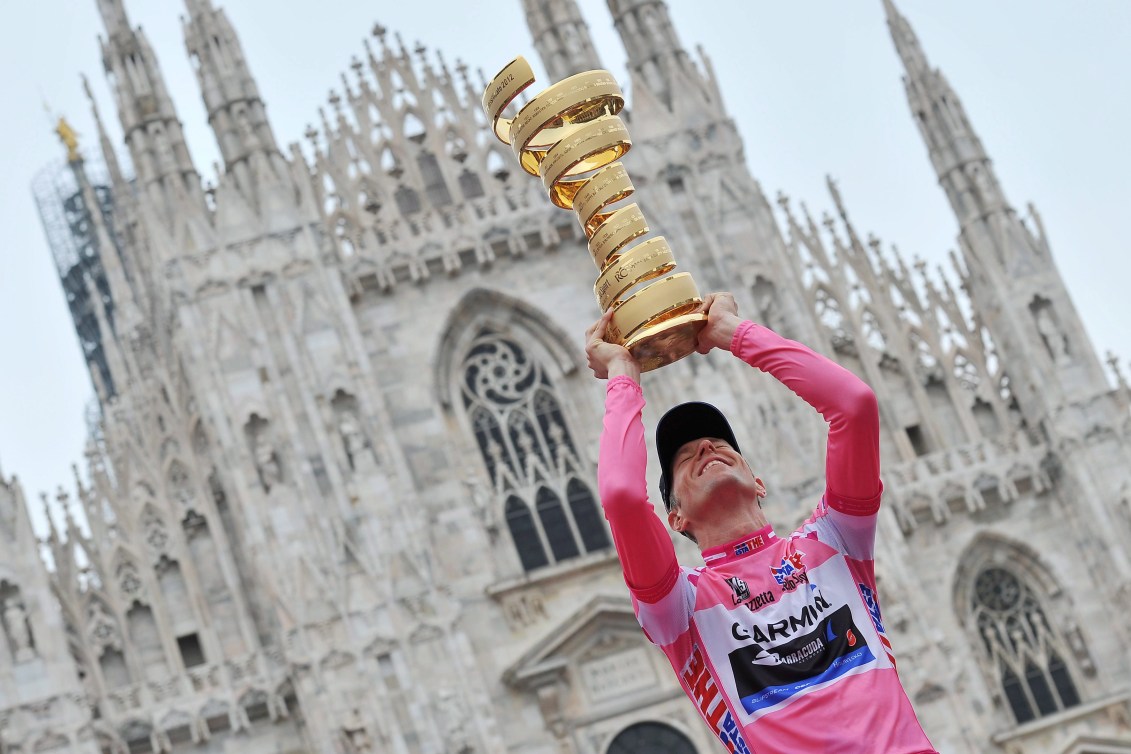
In 2012, Ryder Hesjedal became the first Canadian to win the general classification of a Grand Tour. He claimed the maglia rosa at the Giro d’Italia by coming from behind in the final stage. It was just the second time in the history of the race that there was a lead change on the last day.
Prior to that, the best a Canadian had ever finished in the general classification of a Grand Tour was a fourth-place finish by Steve Bauer at the 1988 Tour de France. Bauer had made history on the opening day of that race when he became the first Canadian to win a stage of the Tour de France.
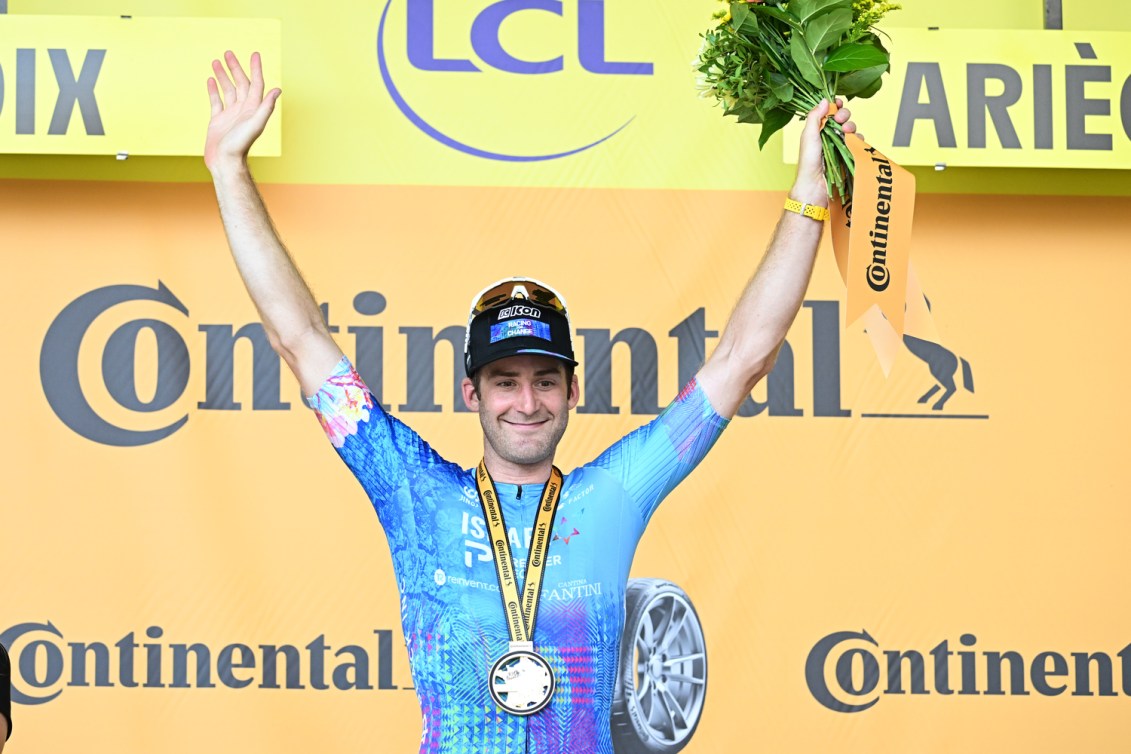
More than three decades later, Hugo Houle became the second Canadian to win a Tour stage. It was an emotionally charged day, as he dedicated his Stage 16 victory to the memory of his younger brother Pierrik who had been killed by a drunk driver 10 years earlier.
Hesjedal was the first Canadian to win a stage of the Vuelta a España, achieving that in 2009 and 2014. Mike Woods earned stage wins at the Vuelta in 2018 and 2020.

